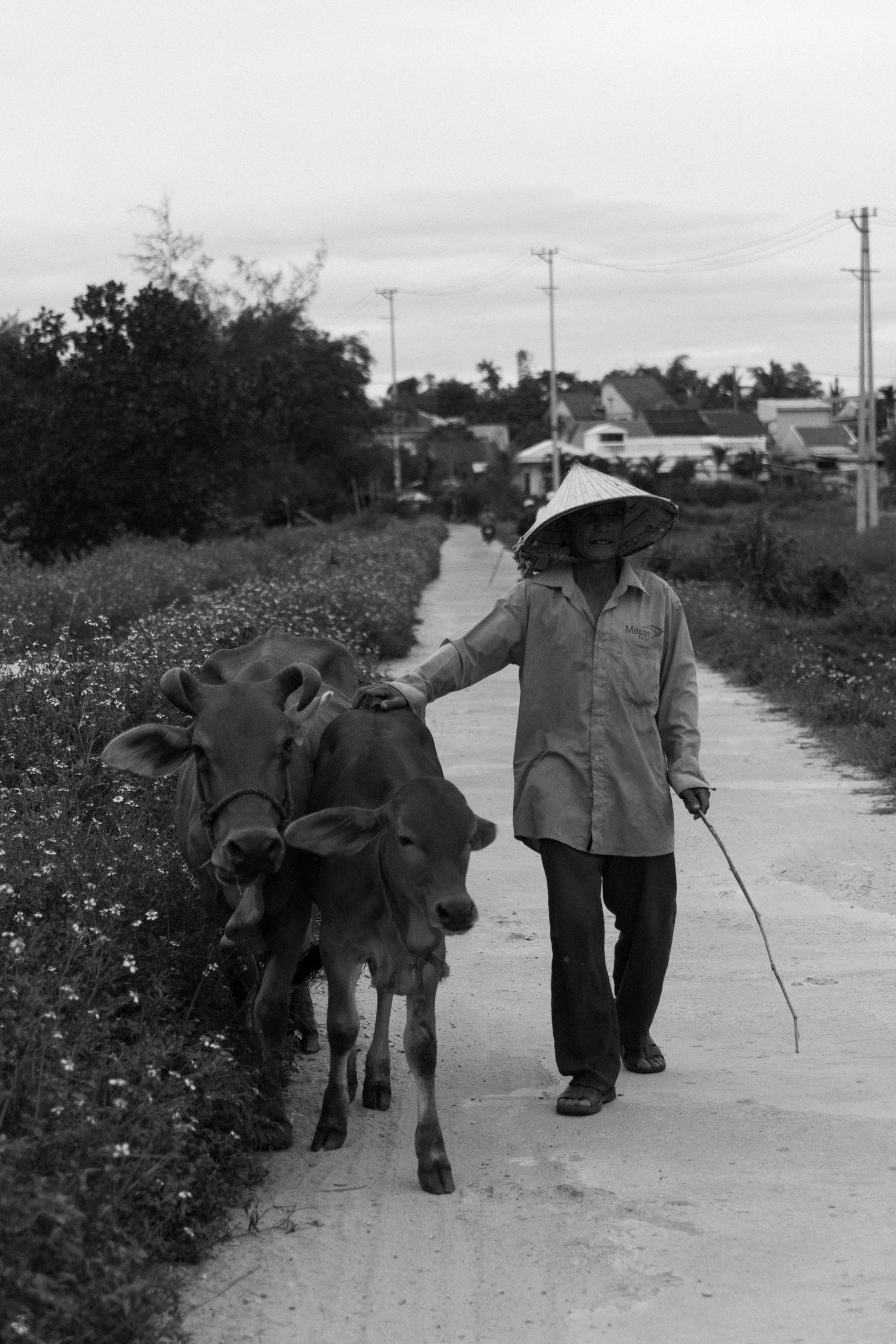Photography can be much more than just a way of capturing the world around us. Jasmijn Doorgeest used her camera as a ‘gateway into conversations with locals’ to learn about Vietnam’s culture and people. She tells us a story of temples, mountains, rice fields and windy bus rides but most importantly of the people she met on the way. Experience Vietnam through a series of portraits.
When travelling around with a camera, I am generally most interested in capturing people. Last year I had the chance to visit Vietnam for three weeks, starting up north in Hanoi and making my way down south towards Ho Chi Minh City. As this country’s north-to-south distance spans 1,650 kilometres, it proved to be quite an intense journey with lots of hours spent in cars. However, I used my camera as a gateway into conversations with locals, which, despite the small timeframe I had, still allowed me to learn about Vietnam and its culture.
Hanoi
After arriving in Vietnam’s capital Hanoi, one of the first places I visited was the Temple of Literature. Here, I met a guard who shared the history of the temple with me; he told me that it was built over 900 years ago and functioned as Vietnam’s first national university. The temple is located close to the city’s Old Quarter, amidst busy streets filled with cars and scooters honking loudly. However, once you enter, noise disappears. Courtyards with picturesque pagodas, gardens and ponds make this place perfect to quiety stroll around.

Sa Pa
Situated north of Hanoi, approximately a six-hour bus ride away, is Sa Pa. This village is known for its beautiful rice fields, although the drive there is already spectacular enough. Going through the mountains provides one with incredible views over valleys covered by low-hanging clouds. As a rural village, Sa Pa’s main source of income is agriculture, although tourism has become increasingly important over the past two decades. On average, the people of Sa Pa are very poor – even by Vietnam’s rural standards. Through governmental and non-governmental initiatives, efforts are being made to improve the situation.


Nam Dinh City
About 90 kilometres southeast of Hanoi there’s Nam Dinh City, home to the Pho Minh Pagoda. I was lucky to arrive there just as a prayer, as part of a ritual to honour someone who had recently passed away, took place. Everyone attending the prayer was wearing a white headband, which traditionally shows that one is in a period of mourning.


Hoi An
About halfway through Vietnam lies Hoi An, a well-known city for its notation as a UNESCO World Heritage Site. Around every corner of the city’s Old Town one can smell good food, marvel at beautiful architecture, and sometimes in the evening, hear music. When I sat down at a restaurant, I got to talk with the owner HuuAn, who told me that Hoi An used to be an important trading destination for both the Chinese and Japanese. The latter even believed that a dragon lay beneath the city, making Hoi An the heart of Asia.

The area just outside of the city is mostly occupied by rice fields, where one can daily walk around to enjoy the nature, but also to see people work and take care of their cattle. Travelling through Vietnam has shown me how diverse this country is, and that three weeks to discover it was definitely not enough.

This article is in collaboration with RAW, Amsterdam University College’s Photography Committee. Photos and text by Jasmijn Doorgeest.
